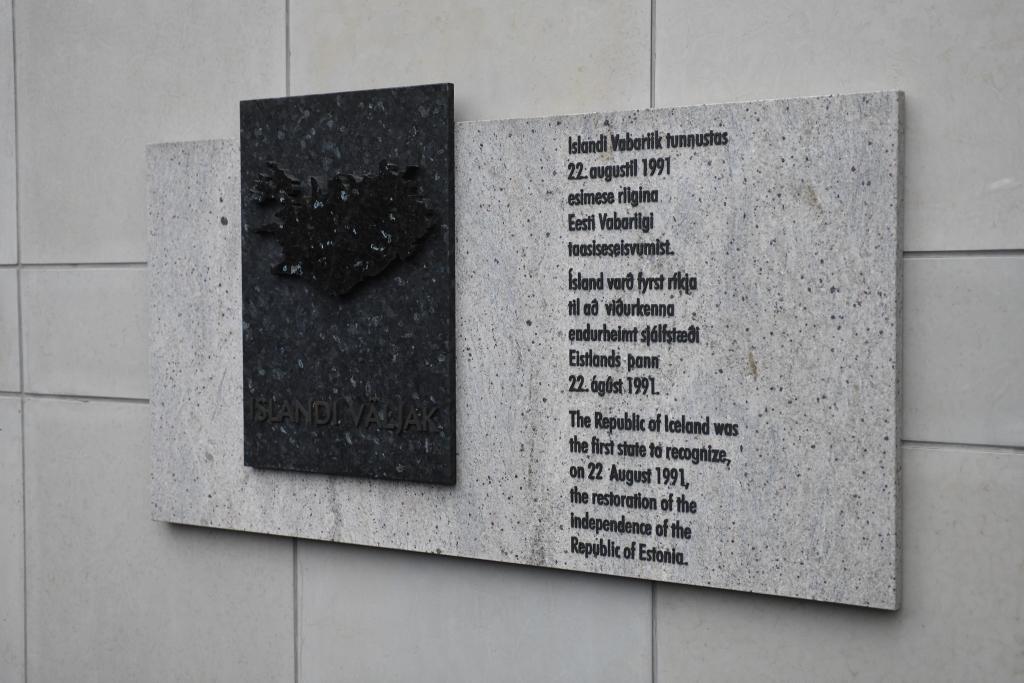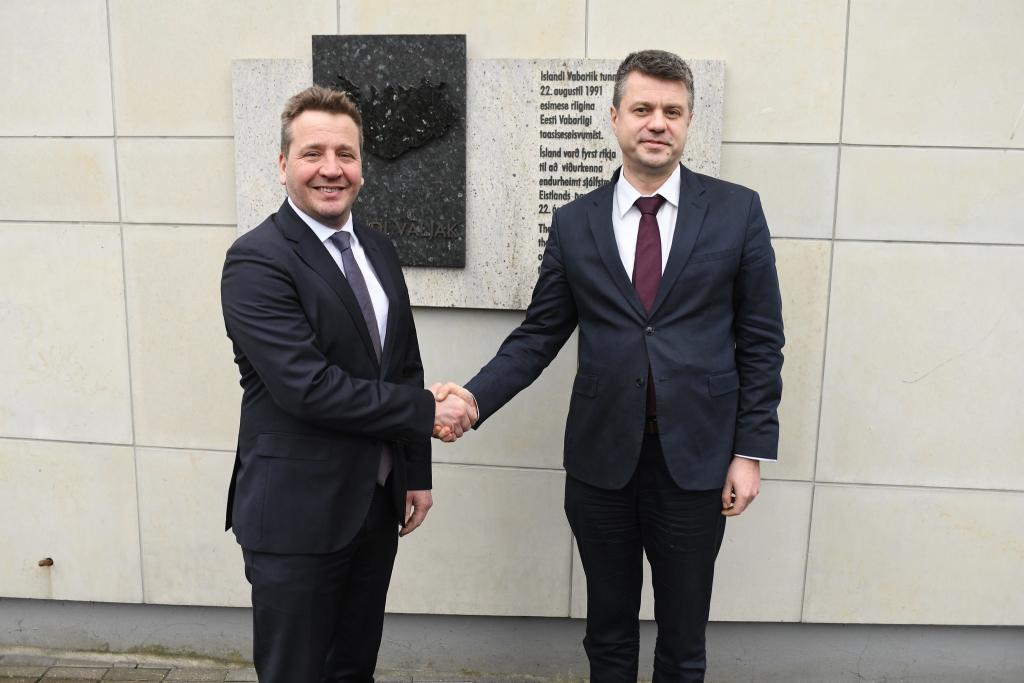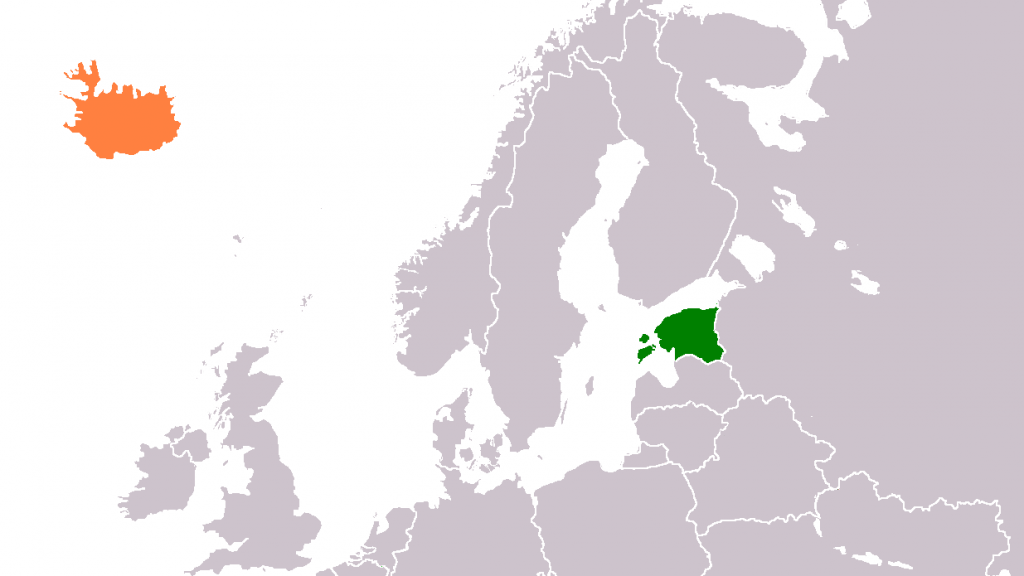Urmas Reinsalu and Gudlaugur Thór Thórdarson, the foreign ministers of Estonia and Iceland, respectively, write that the first 100 years of Icelandic-Estonian cooperation have been successful, illustrated not only by digital and security achievements, but also by the growing numbers of tourists and the vigorous cultural connections.
Every Estonian is likely to learn at a very early age that Iceland was the first country to recognise the independence of Estonia, Latvia and Lithuania on 22 August 1991. Being a small state, Iceland set a great example to the rest of the world, reminding everyone of the importance of international law and the duty to defend one’s values.
In our increasingly complicated world, Iceland and Estonia have jointly supported these principles. Our two small states are valued NATO partners and we also contribute to the efforts aimed at alleviating global suffering, with Estonia as the newly elected UN Security Council member and Iceland as a prominent member of the UN Human Rights Council until the end of last year. Additionally, experts from Iceland working for NATO in Estonia and Lithuania are instrumental in the reinforcement of the security of the Baltic States.

Regional pacesetters
This year, Estonia is coordinating the efforts of the Nordic-Baltic cooperation format – NB8. In fact, it was Iceland who passed us the baton. Thus, two of the smallest countries in the region have been boosting regional cooperation for two years in a row. As NB8 Chair in 2019, Iceland put emphasis on security, including cyber security, human rights and on ocean affairs. The last topic was, in fact, new to NB8 cooperation but highly relevant in light of the critical link between global climate change and the oceans.
The ties between the Nordic countries and the Baltic states are both natural and close, with the synergy reaching far beyond our region. However, even in our extensive cooperation, some unused opportunities still exist. For example, Estonia’s digital state has served as long-standing proof of how the smart implementation of databases and diverse e-solutions can stimulate economic growth and simplify transactions. Estonia is cooperating with Iceland, Finland and the Faroe Islands on the development of the X-Road data exchange layer.

Iceland has begun testing its own X-Road platform, called Straumurinn. Yet the potential is so much greater – it is in the interests of all Nordic countries and Baltic states to promote cross-border data exchange that would allow us to use digital services for keeping abreast of economic changes and simplifying the lives of our ordinary citizens, entrepreneurs and government institutions.
It is clear that the growing number of digital solutions calls for their improved protection, so we must advance our cooperation in the field of cybersecurity. In doing so, we can rely on top-notch expert advice from the Tallinn-based NATO Cooperative Cyber Defence Centre of Excellence and we welcome new interested countries to join the initiative. Estonia’s other NB8 priorities include intensified regional security cooperation, improved energy and transport links, cultural cooperation, healthcare cooperation and climate issues.
The Arctic in a changing world
Climate change is particularly affecting the Arctic, which is close to the Nordic-Baltic region. A maritime country in the Arctic, Iceland is especially attuned to the changes occurring in the polar environment and their growing effect on global policies. From last spring until 2021, Iceland holds the Chairmanship of the Arctic Council. Based on long experience, Iceland sees sustainable development and cooperation as key to addressing the environmental challenges we face in the North, and to building resilient, vibrant communities.
Under the heading “Together Towards a Sustainable Arctic”, Iceland has identified four priorities: the Arctic marine environment, climate and green energy solutions, people and communities of the Arctic and, last but not least, a stronger Arctic Council. This last point refers not only to the cooperation within the council itself but also to cooperating with relevant third parties, because the old saying remain true; what happens in the Arctic, doesn’t stay in the Arctic.

Estonia also wishes to contribute to the sustainable development of the Arctic. The Estonian government has launched the process of applying for observer status on the Arctic Council. Ours is the northernmost non-Arctic country and therefore, developments in the Arctic directly affect us. Estonia possesses excellent competences in several spheres of polar research and Estonian polar researchers have been studying the Arctic for many years. As a country situated close to this region, we are both interested in and responsible for the environmental sustainability of the Arctic.
Celebrating the first 100 years
While many people know about Iceland’s amazing courage in helping Estonia in 1991, fewer are aware of the fact that the two nations also have another significant year in common. It is the year 1918, when both our countries gained independence. Contacts between Iceland and Estonia began in the 1920s – Iceland recognised the Republic of Estonia de jure in 1922, at a time when Iceland was independent but in a personal union with Denmark. Soon, we will be marking the 100th anniversary of the establishment of relations.
The first 100 years of Icelandic-Estonian cooperation have been quite successful. This is illustrated not only by digital and security achievements, but also by the growing numbers of tourists and the vigorous cultural connections that are particularly outstanding in music. As we approach the 100-year mark, we delight in the friendship between Iceland and Estonia whilst constantly seeking new ways to further expand our cooperation.
During 2020, Estonia intends to recognise the individuals who have made a vital contribution to cooperation in the Nordic-Baltic region. There are plans for creating a NB8 prize for this purpose and hopefully, this will evolve into a fine tradition.
The opinions in this article are those of the authors. Cover: Iceland and Estonia highlighted on the map of Northern Europe (Wikipedia).

